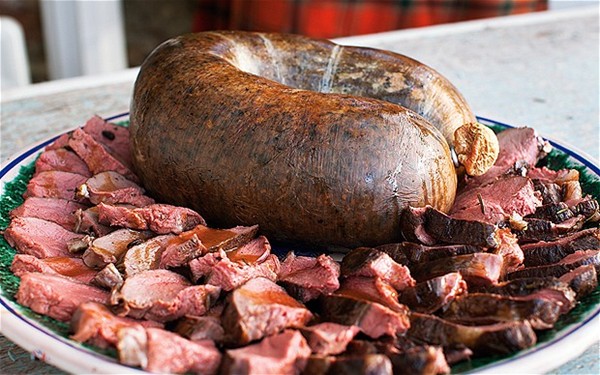Who gets to decide which foods are disgusting?
May 12, 2021 by DarcieIf you ever watched Anthony Bourdain’s show No Reservations, you probably saw the erstwhile chef eating foods that to most Western palates would be deemed ‘disgusting’, items such as warthog anus and fermented shark fin. However, to the peoples where these foods originated, they are thought of as delicacies, or at least national symbols to be proud of. This notion of who gets to control which foods are considered disgusting is explored by Jiayang Fan in a fascinating (and lengthy) article in The New Yorker.

Yan explains the concept by first introducing us to Sweden’s Disgusting Food Museum and then contrasting the items on display there with her own experience of being an immigrant to a new country, where items cherished by the majority are completely foreign and off-putting to those newly landed on the nation’s shores. “To be a new immigrant is to be trapped in a disgusting-food museum, confused by the unfamiliar and unsettled by the familiar-looking,” she writes, adding that “The firm, crumbly white blocks that you mistake for tofu are called feta. The vanilla icing that tastes spoiled is served on top of potatoes and is called sour cream. At a certain point, the trickery of food starts to become mundane. Disgusting foods become regulars in the cafeteria, and at the dinner table.”
When I read the article, I immediately thought of comments made on the recent post about insects being part of the future of food. The comments were along the lines of “thanks but no thanks.” But is the concept of eating bugs really that revolting? I once ate chocolate covered crickets because the idea intrigued me. I was hesitant at first, but after a few bites I realized that the crickets added a nice crunch and savory counterpoint to the sweet milk chocolate. My husband had a similar experience on a trip to Mexico. He was in a restaurant and was enticed by the aroma of a dish that a waiter was carrying to another table. My husband flagged down the waiter and ordered the dish. After he ate it – and enjoyed it immensely – he asked what it was and discovered that it was ant larvae and pupae (escamoles). Had he known in advance there is no doubt that he would not have ordered the food.
In her deep dive, Yan also explores the role of natural selection in the formation of the disgust response, and how community and culture reinforce the notion of which foods – and other items – are disgusting. She also weaves in how COVID-19 has affected people’s sense of smell, rendering some foods extremely off-putting. The article is an engrossing examination of the concept of disgust.
Photo of Roast haggis from The Telegraph by Carolyn Hart
Categories
- All Posts (7077)
- Antipasto (2207)
- Author Articles (250)
- Book News (944)
- Cookbook Giveaways (996)
- Cookbook Lovers (262)
- Cooking Tips (116)
- Culinary News (299)
- Food Biz People (558)
- Food Online (800)
- Holidays & Celebrations (277)
- New Cookbooks (154)
- Recipes (1520)
- Shelf Life With Susie (231)
- What's New on EYB (134)
Archives
Latest Comments
- Kisa on French at Heart – Cookbook Giveaway
- smcculle on French at Heart – Cookbook Giveaway
- SULouisville on Balli Balli – Cookbook Giveaway and Quick Bites
- SULouisville on 20 Amici – 40 Ricette Cookbook Giveaway
- SULouisville on French at Heart – Cookbook Giveaway
- SULouisville on French at Heart – Cookbook Giveaway
- JimCampbell on Food news antipasto
- Indio32 on Four outstanding independently published cookbooks worth your attention
- nvernon on Four outstanding independently published cookbooks worth your attention
- fayegibson on Four outstanding independently published cookbooks worth your attention